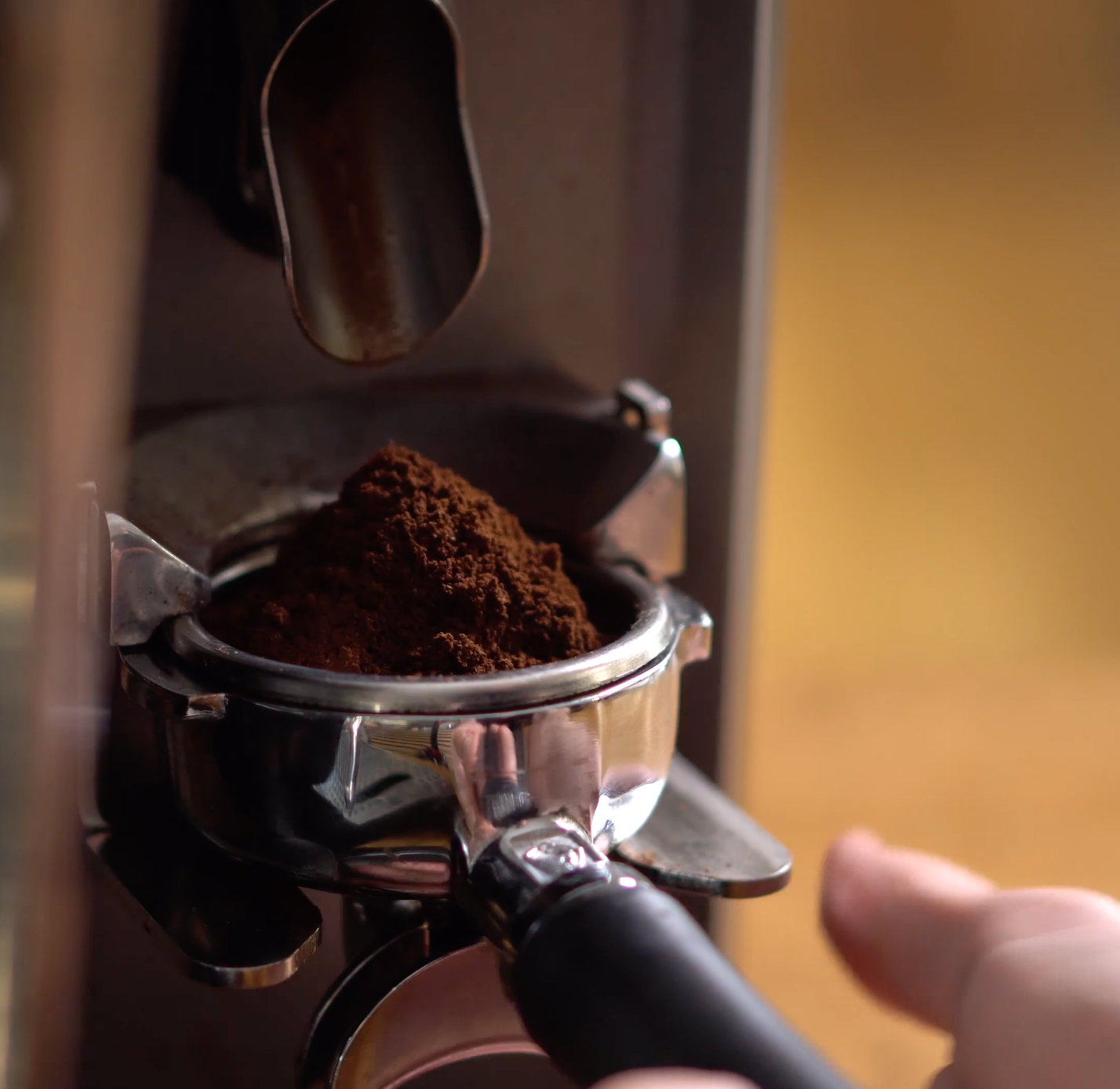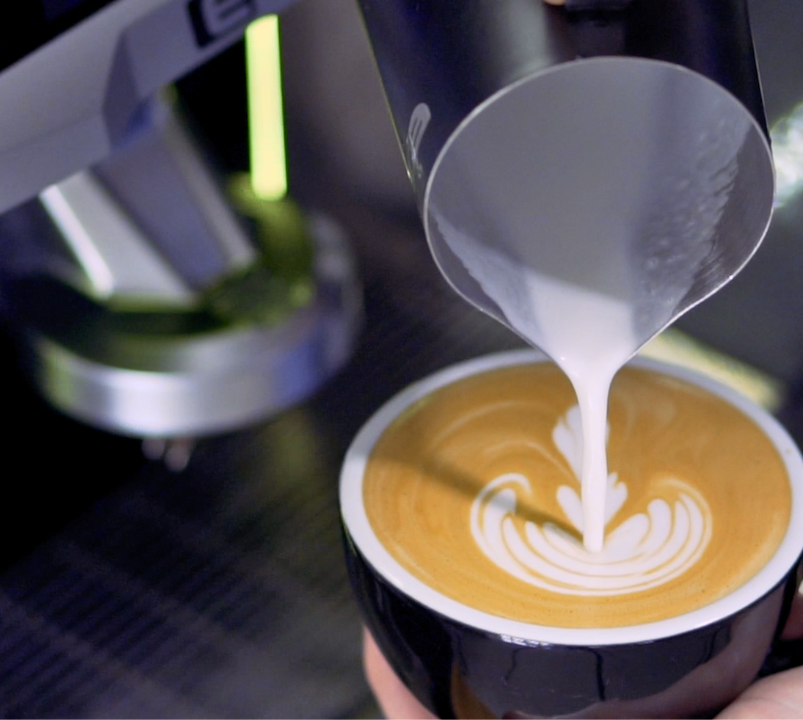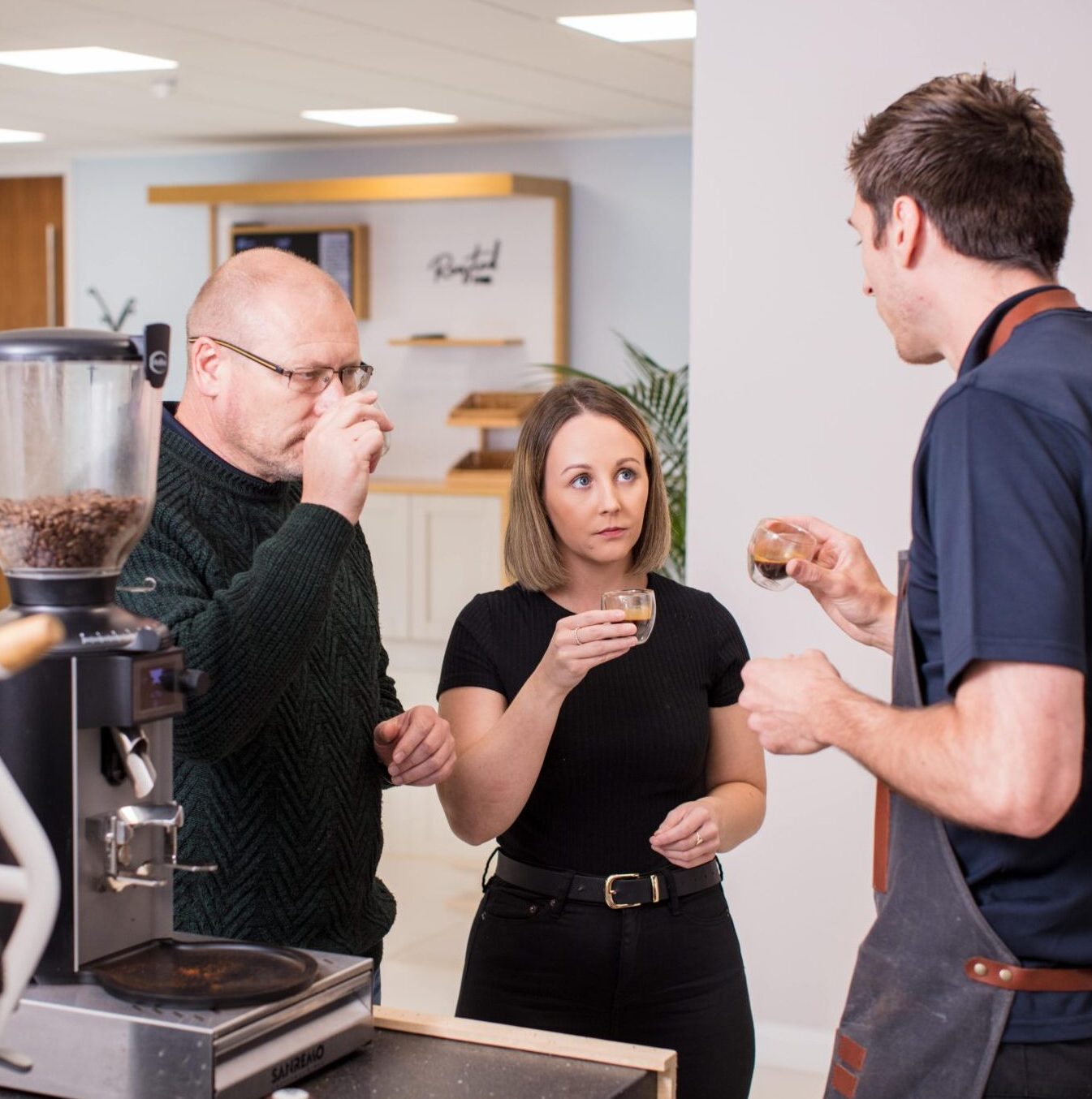High levels of staff turnover is an issue that constantly plages the hospitality industry. In fact, data suggests that hospitality sees the highest rates of employee churn across all UK industries, with a reported 37.6% of workers leaving a job each year.
The problem of staff turnover is an inherent issue – low paying jobs with irregular hours which do not typically call for a wealth of experience. These roles tend to preferentially attract short term and part time workers, often lacking in terms of career progression and rewards for loyalty. With this article, we aren’t going to come up with a solution to the problem of hospitality staff turnover. Instead, we’re going to stay in our own lane.
Staff turnover massively affects our wholesale customers, getting in the way of maintaining a high service quality, having a familiar friendly face behind the counter, and having consistently high-quality drinks. So, in this article, we’re outlining some of the ways in which staff turnover can hurt coffee shops, and what they can do to help combat the effects of a changing workforce when it comes to maintaining high standards of coffee and service.
How High Staff Turnover Hurts Cafes
Coffee shops are constantly struggling with maintaining competent, highly trained staff – especially when it comes to serving impressive latte art, a skill that can take years to acquire and perfect. Barista training can be expensive and time consuming, especially if you have a new team member every few months, and having an inconsistent experience purely determined by who is on shift is frustrating for your customers.
Having a high staff turnover has several effects on coffee businesses, including:
- Constant need for training resources
- Risk of understaffing
- Inconsistent service quality
- Puts pressure on full-time staff
- Costs of hiring
These are just to name a few, and if you’ve worked in a coffee shop yourself, you likely know the impact that can be felt by losing a competent and well-liked member of the team. Whilst staff turnover is itself a difficult problem to solve, there are many things you can implement in your coffee shop to significantly reduce its impact.
What Can Cafes Do to Combat the Effects of Staff Turnover?
1. When Hiring for a Role, Prioritise Experience
Now, this could be a difficult tip for some businesses to implement. But – making sure that your new hires are already experienced in serving coffee to a good standard is a great step in reducing the impact of staff turnover. An experienced barista will likely have a good skillset when it comes to serving quality coffees, and should have a good understanding of the standard processes that go into running a coffee shop
This can be difficult to achieve if you aren’t offering proper compensation for that experience. It can also be difficult to find experience staff in smaller towns and villages compared to big cities where there are plenty of well-trained baristas moving through roles regularly. When you experience staff turnover, you should always prioritise finding experienced staff who can take the reigns from day one. To do this, offer a competitive salary for your location, and make sure to advertise the role effectively on social media and online job boards.
2. Lower the Training Threshold through Automation
Being a competent barista is hard, and it takes time. There are a number of steps in the process to master in order to get great drinks from your coffee beans – Grinding, dosing, tamping, brewing, nailing the extraction, texturing milk, pouring latte art. There’s a lot to learn, and a lot of hours to put in.
However, not all coffee setups are created equally. Traditional coffee grinders and espresso machines are incredible tools for your baristas, but much like a fine musical instrument, they can be difficult to master. Having a high barrier to entry for high quality drinks can cause big issues when your well-trained staff decide to part ways with you. Nowadays, there are plenty of different options available to help lower the barrier, and aid your baristas in serving delicious coffee from day one.

Bean to cup machines
The most obvious solution to making it easy on your baristas is to fully remove them from the coffee creation process by replacing your traditional setup with a bean-to-cup machine. The main concern with bean-to-cups is that they lower the quality of your drink overall, and that’s certainly true for the budget options. Read more -> The 4 Problems with Bean-to-Cup Coffee Machines
If you’re experiencing high staff turnover, your drink quality is likely quite inconsistent. You may be serving great coffee on your best days, but poor quality drinks for even one day per week can hurt your reputation. You might therefore want to consider a bean to cup machine to keep the standard of your coffee respectable and consistent.
For a great option, we’re big fans of the machines from Schaerer, and if you want a premium bean-to-cup that competes with skilled baristas, check out Eversys machines.

Weight-Based Dosing Grinders
Using the correct dose of espresso grounds is one of the most crucial steps in ensuring a great, consistent quality cup of coffee, with small variances in the amount of coffee being used causing larges changes in the flavour of the drink.
One step in the coffee-making process that new baristas may struggle with, which is also rather easy to eliminate, is correctly dosing the right amount coffee into the grinder. By swapping out your time-based grinder for a weight-based grinder, you can ensure you’re getting the same amount of coffee and therefore the same flavour every single time. Consider the E65S Grind by Weight or the Gravimetric MYG75 as two of our favourite options.

Automatic tampers
Tamping with a consistent amount of force and ensuring the grounds are flat and well distributed inside the puck is another important step – it’s not necessarily difficult to learn, but everyone has their own method. To ensure consistency across your coffee shop and help new staff get a head start, you could purchase an automatic tamper. Electric tampers such as the PUQPress are more pricey but are the best option for commercial settings, but you could also consider using a spring-loaded manual tamper.

Automated Milk Steaming
Of all the skills required to be a fantastic barista, latte art and milk steaming is the one that takes the longest to master. New staff that haven’t had the practice will not be able to reproduce the beautiful patterns previously seen by your experienced baristas, until they have had experience and potentially even training.
Luckily, there’s a huge number of options now available to automatically steam and texture milk for your staff. If you’re interested in exploring this as an option then feel free to ask our team about which would suit your needs best. For a demo on one of our favourites, check out the Four Eversys Cameo Milk Steaming Options.

Before you continue...
Enjoying this article so far? Subscribe to our newsletter and join the community of 10,000 and get tips like this straight to your inbox.

3. Don’t be Reliant on Existing Staff
Whilst you might be good friends on a personal level with your staff, and you want to reward their hard work to encourage loyalty as best you can, you also need to be realistic. Jessica, your part-time barista who is in her final year of a nursing degree, is unlikely to stick around for the long haul. In order to properly combat the effects of staff turnover, you need to be able to see it coming.
You also need to make sure that your business isn’t solely running off the back of one staff member. Things can come crashing down when your most skilled barista is also in charge of placing orders, setting the schedule and designing the menus, and then they hand in their notice with no warning.
To make sure you aren’t negatively impacted by losing a member of staff, make sure to develop meaningful relationships and to have candid conversations with them about their personal goals, career predictions, and their time in your company. If you can connect with your team on a personal level, you’ll be able to sense when their time is coming to an end and to prepare yourself for that moment.
4. Bring Barista-Training In-House
Training up new staff is going to be one of the big hurdles to overcome when you experience high levels of turnover. That’s why we’ve suggested lowering the skill barrier with automation and the right tools, and prioritising experience in the hiring process. However, even with the best tools and already trained staff (in an ideal world), barista training still runs the risk of being a large expense for your company, either in time or financially. To combat this risk, we suggest bringing your barista training resources in house. By this we mean – get yourself trained up.
Enlisting yourself along your permanent staff on barista training courses is a fantastic way of upscaling the coffee quality in your shop for the long-term. Part time staff come and go but as the owner or operator of the coffee shop, you can ensure all future staff are trained to a good enough standard by becoming the in-house source of coffee knowledge.
Outsourcing to a barista trainer every few months can be an expensive endeavour, but training yourself will pay off greatly in the long run. Start with our barista training courses or learn on the go by subscribing to our YouTube Channel.
5. Standardise Processes and Recipes
Along with the manual and soft skills involved with creating great coffee drinks and offering friendly customer service, there are also a number of processes involved in the day-to-day that customers don’t see – such as food hygiene checks, stock taking and order processing.
In order to quickly onboard new staff, make sure there are systems in place to make these processes easy to teach and follow. You could use online training platforms, spreadsheets and workflows, and sit down with your new employee to walk them through the systems. Coffee recipes will also need to be standardised to make sure all new and existing staff are on the same page with recipes, crockery and serving suggestions. To download a sample coffee shop menu with full recipes and serving suggestions, click here.
Looking for support in the fight against staff turnover?
Subscribe to our newsletter below for fortnightly tips, or get in touch with the team!
Get in touch

